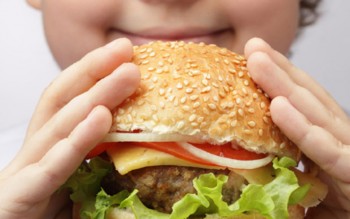
The risks of poor eating habits
Numbers of young people with atherosclerosis, a disease once common mostly among adults and the elderly due to a fat-rich diet, are increasing.
Karine Salles
Monday | April 27, 2015 | 2:15 PM | Last update: September 22, 2016, 4:07 PM (Brasilia time)

The hectic pace of modern day life has altered our society’s eating habits. More and more, balanced diet is increasingly giving way to a menu that is rich in substances that are harmful to the body: the well-known fastfood. The continuous consumption of this kind of food brings serious consequences that are noticed among young people with a greater intensity, the development of atherosclerosis—an obstruction of blood vessels by lipids (fat).
It is actually a serious illness that evolves slowly and silently over the years. Its problems, in most cases, used to manifest only in adults and the elderly. Atherosclerosis can affect the arteries of the brain, the heart, the kidneys and other vital organs as well as those in the upper and lower limbs. When atherosclerosis occurs in the arteries that supply blood to the brain (carotid arteries), it can cause a stroke and when it occurs in the arteries that supply blood to the heart (coronary arteries), it can cause a myocardial infarction (heart attack).
However, recent studies have shown that the disease is occurring more and more frequently among young people. Even children have been developing cardiovascular diseases. A Research conducted by the American Heart Association pointed to the fact that many children and adolescents have adult arteries. Vascular surgeon Ricardo Pulido, in an interview to the Boa Vontade Portal, stated that this fact occurs due to the diet that is offered. “They have contact with very fatty food and food containing high levels of carbohydrates early in their lives, a situation that didn’t occur in previous generations. This causes children to have a high cholesterol load and high levels of fat, which both lead to the building up of fat in the arteries”.
In the 1980’s and the 1990’s, strokes were responsible for 5% to 10% of all cases of this kind of accident in this age group. After the year 2000, the numbers have jumped to between 15% and 20%. There are two kinds of strokes: the ischemic and the hemorrhagic type. In treating the former (provoked by an obstruction in the circulation)—which is responsible for 80% of stroke cases in Brazil—a medication that dissolves the clot that blocks the flow is usually employed. In the hemorrhagic type, caused by a rupture of the vessel that irrigates the brain, a surgery may be performed.

Researchers from Texas (USA) correlated the number of fast food companies and the percentage of people who have suffered strokes. The study showed that people living in districts where there are many restaurants offering this kind of food develop more chances of suffering a stroke, nearly 13%. For each restaurant, the risk increases in 1%, said the International Stroke Conference 2009.
About this aggravating factor, Dr. Eli Faria Evaristo, assistant doctor of the Emergency Neurology Services of the Clínicas Hospital of São Paulo University (HC/USP), firmly states that yes, there are great chances of cases of this illness. He also warns that: “Atherosclerosis is favored by some eating habits that increase the levels of cholesterol and triglycerides in the blood. But that’s not all. The gain in weight and obesity also increase the risk, generating a clinical situation known as metabolic syndrome, in which obesity, increased blood pressure, glucose alterations and high cholesterol occur. This has been happening with greater frequency even among younger people due to cigarette smoking and sedentary life”.
Parent’s attention
According to Dr. Samantha Enande, a nutrition specialist, “parents must take their children to the doctor, have them examined, and treat them correctly, making changes in the eating habits, not only for the children, but for everyone in the household”. Parents and those responsible for the children must be very attentive to any alterations in the health of their kids. Normally, children will not exhibit any outer signs or symptoms due to artery obstructions. Parents must begin their vigilance at the market. Food must be as natural as possible. The little ones must receive this guidance from their parents, as well as counseling about avoiding fried and breaded food.
Children must be defended, because they still lack the discerning power to know what can cause them harm. Another important aspect is to educate them not to eat outside meal times, or in large quantities at every meal; the ideal situation would be small quantities over an average interval of three hours. These preventive measures are important even for those who seem to be healthy. Specialists affirm that it is very unlikely that 15 or 16-year- old kids will exhibit any symptoms; but it is possible that when they are 40, they start developing these symptoms, and it may be too late for any interventions.
Translation: Robert Rajabally
Revision: Rosana Bertoli


